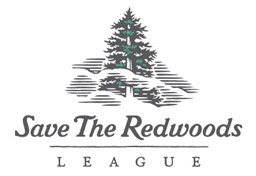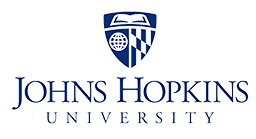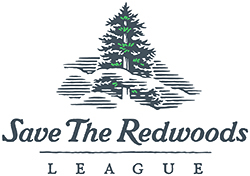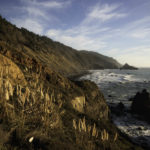Contact:
Robin Carr, Landis Communications Inc.
(415) 766-0927 | [email protected]
Download the press release
Multi-year effort funded by Save the Redwoods League provides the scientific foundation to better understand redwood responses to climate impacts and pathogens. Genome now available to scientific community.
San Francisco, Calif. (December 16, 2021) — Save the Redwoods League, University of California, Davis, Johns Hopkins University, University of Connecticut and Northern Arizona University today announced new research that identifies the makeup of the coast redwood and giant sequoia genomes. The information helps scientists and conservationists better understand the genetic basis for these species’ ability to adapt to their changing environments. Through comparative analysis, the research also indicates that the coast redwood genome evolved from a single ancestral species.
Today’s announcement follows the official publication of the coast redwood genome research this week in G3: Genes, Genomes, Genetics. The researchers previously made available the completed giant sequoia genome sequence, published in G3 in November 2020. The coast redwood and giant sequoia genome sequence data is available to the scientific community on Neale Lab’s UC Davis website.
“It’s remarkable how far genomics research has come since we undertook this challenge in 2017,” said David Neale , Ph.D., plant sciences professor emeritus at UC Davis and lead author on the new coast redwood genome research. “Our work on the coast redwood and giant sequoia genomes will enable us to develop modern genetic tools that can be used in the restoration and conservation of these ecologically important tree species.”
The League and its research partners launched the Redwood Genome Project in 2017. Project partners outlined an ambitious plan to fully sequence the coast redwood and giant sequoia genomes for the first time, using new conifer genetic sequencing techniques. The genomic resources and screening tools that can now be developed will allow researchers to quickly assess evolutionary adaptive potential in these forests and ultimately inform forest restoration and management plans.
The Coast Redwood Genome
The coast redwood is the world’s tallest tree, and its genome is among the most complex sequenced. Nearly nine times larger than the human genome, it is also the second largest genome sequenced. The redwood genome has 26.5 billion base pairs of DNA, and it is hexaploid, meaning redwoods have six sets of chromosomes. Humans have 3 billion base pairs of DNA and are diploid, with two sets of chromosomes.
When comparing the coast redwood genome sequence to that of other conifer species, researchers found hundreds of gene families that are unique to the coast redwood. Many of these are genes that help the trees respond to stress and play a role in resistance to fungal disease, detoxification, repair after injury and the synthesis of flavonoids, which help fight stress on the cellular level.
The new research also sheds additional light on the origin of the rare and large hexaploid genome of the coast redwood. Multiple genes exist in triplicate, and those copies share more similarities to each other than to the sequences of other species. This analysis supports the hypothesis that the redwood genome originated from a single ancestral species (autopolyploidy), rather than through hybridization with other conifer species.
The Giant Sequoia Genome
The giant sequoia is the world’s largest tree species and among the oldest on the planet. As reported by the research team in November 2020, its genome contains 8.125 billion base pairs of DNA. Similar to the human genome, the giant sequoia genome is diploid. The reference genome produced for this study represents the first genome sequenced in the Cupressaceae family, and it lays a foundation for using genomic tools to aid in giant sequoia conservation and management.
The genomes of conifers are three to 10 times larger than the human genome. They are highly repetitive and complex. The first conifer genomes ever sequenced were the Norway spruce in 2013 and loblolly pine in 2014, 10 years after the human genome was completed. Sequencing conifer genomes was not previously feasible due to economic and technological limitations. With technological advancements that also reduced the cost, 10 conifer genomes have now been sequenced, including the coast redwood and giant sequoia.
The reference genome sequences of coast redwood and giant sequoia enabled the preliminary identification of genes that determine drought-related traits and those that determine adaptation to the environment. These discoveries are reported in papers published in The Plant Journal and Genes.
About the Redwood Genome Project
Save the Redwoods League has provided strategic guidance and funding for the Redwood Genome Project specifically to inform forest restoration and stewardship activities that will maintain adaptive genetic diversity of the coast redwood and giant sequoia forests.
In the last 160 years, commercial logging and clearcutting claimed 95% of the coast redwood range and about one-third of the giant sequoia range. In 2020, an estimated 10% to 14% of giant sequoia died from high-intensity wildfires, and in some areas the seedbank also died. Two wildfires also burned through large sections of the giant sequoia range in 2021, and mortality from those is currently estimated to impact another 5% of the mature trees. As a result, both forests have experienced significant losses in total acreage and potentially a loss of genetic diversity as well.
With these significant impacts to both populations, the League is leading restoration projects in both forest ranges. It aims to use this and future genetic research to inform efforts to restore and maintain genetic diversity and bolster the resilience of these species in the face of rapid, unprecedented environmental change.
“This ambitious scientific research provides a critical foundation for the League and the entire redwoods community. It will ultimately help us understand the incredible range of responses that coast redwood and giant sequoia species have exhibited in the face of climate change and how native genetic diversity has informed these responses,” says Joanna Nelson, Ph.D., director of science and conservation planning for Save the Redwoods League. “The Redwood Genome Project helps us see, for the first time, the full genetic diversity that has allowed these forests to adapt and survive for millennia — and could protect them against a suite of conditions they have never experienced.”
The Redwood Genome Project is made possible by Save the Redwoods League, University of California, Davis, Johns Hopkins University, University of Connecticut and Northern Arizona University. Generous donors of Save the Redwoods League have contributed more than $1 million to the project through Forever Forest: The Campaign for the Redwoods, including a significant lead gift from Ralph Eschenbach and Carol Joy Provan. In addition, genomic services companies Illumina, Oxford Nanopore Technologies and Dovetail Genomics contributed in-kind.
To learn more about and support this groundbreaking initiative, visit the League’s website at SaveTheRedwoods.org/Genome.
* * *
To schedule an interview, contact Robin Carr at (415) 766-0927 or [email protected].

One of the nation’s longest-running conservation organizations, Save the Redwoods League has been protecting and restoring redwood forests since 1918. The League has connected generations of visitors with the beauty and serenity of the redwood forest. The nonprofit’s 29,000 supporters have enabled the organization to protect more than 216,000 acres of irreplaceable forest in 66 state, national and local parks and reserves. For information, please visit SaveTheRedwoods.org.

UC Davis is a public institution, land-grant university and pioneer in interdisciplinary problem-solving. Its four colleges, five professional schools, more than 100 academic majors and 90 graduate programs make it the most comprehensive of all the University of California campuses.

Johns Hopkins is America’s first research university. For more than 140 years Johns Hopkins has been a world leader in both teaching and research, with nine academic divisions — the Krieger School of Arts and Sciences, the Whiting School of Engineering, the Bloomberg School of Public Health, the Carey Business School, the Peabody Institute, the Paul H. Nitze School of Advanced International Studies, and the schools of Medicine, Nursing, and Education — plus the Applied Physics Laboratory, a nonacademic division that supports national security and pursues space science.

The University of Connecticut is a national leader among public research universities, with more than 32,000 students seeking answers to critical questions in classrooms, labs, and the community. A culture of innovation drives this pursuit of knowledge throughout the University’s network of campuses. Connecticut’s commitment to higher education helps UConn attract students who thrive in the most competitive environments, as well as globally renowned faculty members. Our school pride is fueled by a history of success that has made us a standout in Division I athletics. UConn fosters a diverse and vibrant culture that meets the needs and seizes the opportunities of a dynamic global society.

Northern Arizona University is a high-research institution providing exceptional educational opportunities in Arizona and beyond. NAU delivers a student-centered experience to its nearly 30,000 students in Flagstaff, statewide and online through rigorous academic programs in a supportive, inclusive and diverse environment. Dedicated, world-renowned faculty help ensure students achieve academic excellence, experience personal growth, have meaningful research opportunities and are positioned for personal and professional success.
Tags: 2021, forest management, genetic diversity, Press Release, redwood genome, Redwood Genome Project




2 Responses to “Completed Redwood Genome Sequence Reveals Genes for Climate Adaptation and Offers Insights into Genetic Basis for Survival”
Richard Cronn
Hi Save The Redwoods folks – I’m reaching out to find out who I might talk with in your organization about coast redwood burl poaching. My team at the USFS PNW Research Station has been developing DNA markers that help law enforcement investigate timber poaching cases, and to match wood from trees or stumps to detached pieces like logs, boards, and sawdust. Our work has led to federal prosecutions (this article describes one; https://www.nytimes.com/2021/11/10/us/justin-wilke-maple-fire-tree-dna-sentenced.html). Our group has an extensive range-wide collection of coast redwood (collected by Adventure Scientists in 2020), and we have the potential to develop similar “on-the-shelf” technologies for redwood. Thanks — Rich Cronn
Save The Redwoods League
Hi Rich, we have passed your note and contact information on to our land programs team, who steer our science, education, conservation, stewardship and restoration efforts. Thanks for reaching out!